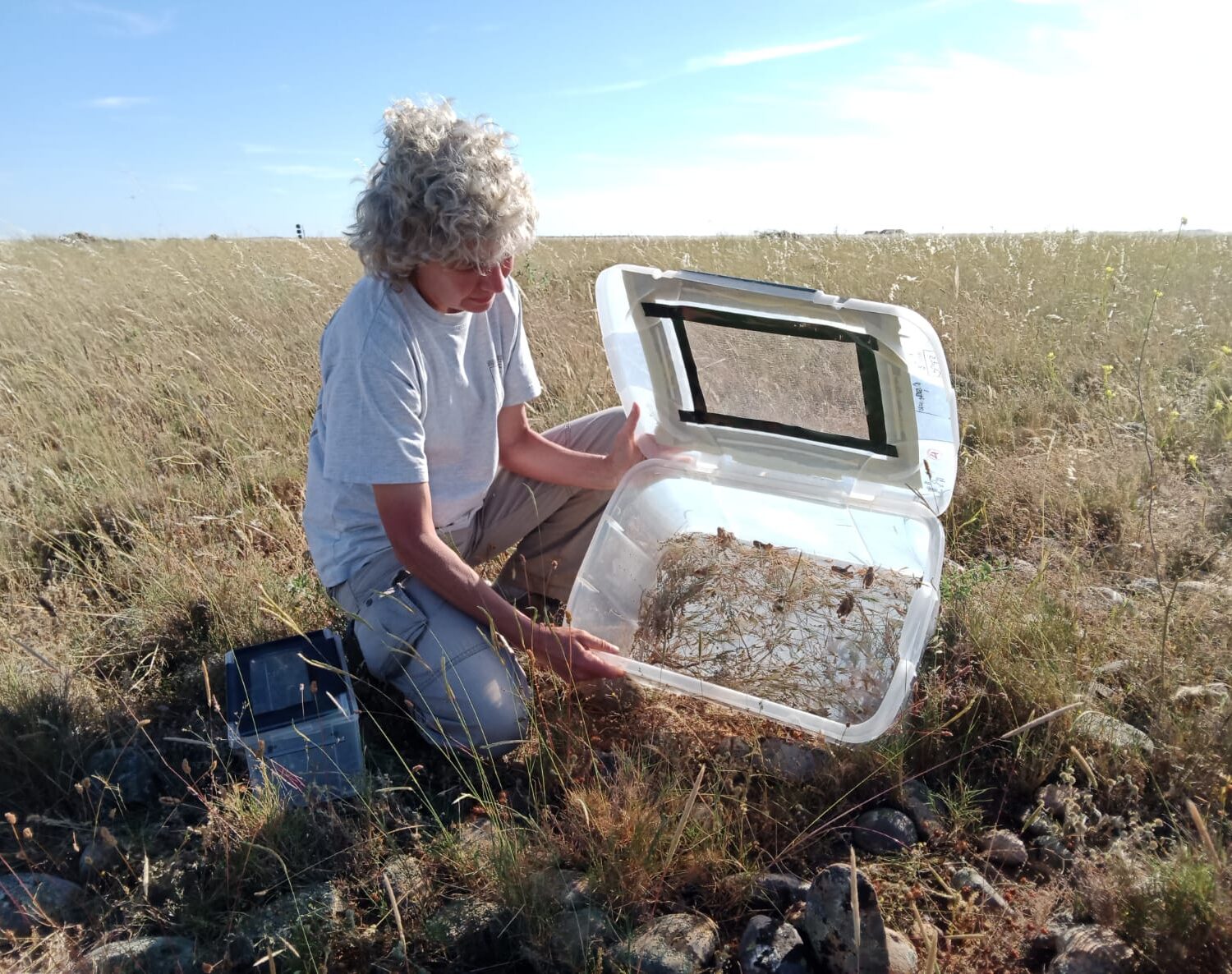The LIFE SOS Crau Plain Grasshopper project team first set up a temporary exclosure equipped with a mobile fence to protect the reintroduction zone. This protection allows the vegetation to grow and keeps out insectivorous birds such as the Cattle egret, which live with the sheep flocks present in the Crau at this time of year.
Reintroduction objectives
This project involves translocating:
- 60 individuals from a neighboring wild population and from a conservation breeding program for the species established at the Parc animalier de la Barben and at the Citadelle de Besançon.
- 30 egg pods (a kind of egg pouch made by the female when laying eggs, with soil amalgamated around the eggs – around 16 eggs per egg pod), also from the grasshoppers bred at the Parc animalier de La Barben and at the Citadelle de Besançon.
The method
It is important to test several reintroduction methods to determine which will be the most effective.
The translocation window for wild grasshoppers is quite small. We have in fact waited until they have completed their development and reached the adult stage at their birth site, and we are transferring them before they begin to reproduce, so that the females will lay their eggs at the reintroduction site and their offspring will hatch there as early as spring 2025. This operation requires us to prospect the “source” population every day, looking for individuals to transfer. We find between 0 and 7 per session. At this rate, it will take several days of searching. The success of the searches is also highly dependent on weather conditions: these very discreet grasshoppers become virtually undetectable in windy conditions, or when temperatures are cool (as they are not active in such weather).
The reintroduction of adult grasshoppers from the breeding program is carried out in parallel, but this is a much lighter operation, as the grasshoppers are collected in an aviary (specially adapted for them) where they are much easier to find.
The first egg pods from the breeding program are also being transferred starting on June 14th. They were laid by captive females in specially adapted terrariums. We then remove them and bury them again in the Crau soil at the reintroduction site, where they will hatch next spring after a long period of dormancy and embryonic development.
Rédactrice : Chloe Allievi, Conservatoire d’espaces naturels de Provence-Alpes-Côte d’Azur
